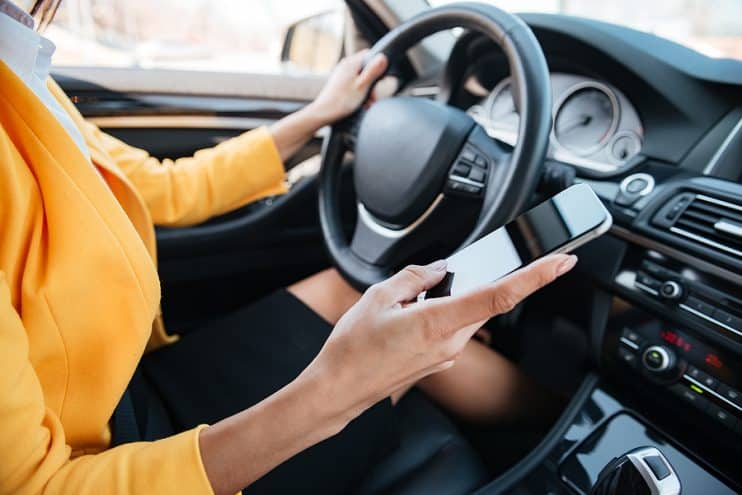
What is the hard shoulder? It’s that strip of concrete that runs parallel to the lanes on the motorway that no-one uses for driving, not even when the traffic is stacked and packed in a jam. The surface area is indicated by a solid white line and it gives drivers of all vehicles, even lorries, enough space to pull over and not disturb other traffic in the event of an emergency.
You know how we said that people don’t even use the hard shoulder in traffic jams? This is to give emergency vehicles like fire engines and ambulances enough space to bypass traffic in the event of a disaster or severe pile up. Finally the hard shoulder even gives the motorway a little run-off for heavy rain, ensuring that drivers don’t have to deal with aquaplaning due to too much liquid on the road.
In more recent times you may find that the hard shoulder can come into use due to roadworks or severe congestion, but in these instances there will be highly explicit instructions about using this strip of road. Motorways are without question a dangerous place, and the hard shoulder can be an accident black spot as around 10% of all motorway fatalities occur on the hard shoulder.
It is vital that you understand the use of the hard shoulder to avoid fines and injury. If you are caught using it incorrectly then you will find yourself the recipient of a £100 fine and 3 points on your license.
Table of contents:
- When to Use the Hard Shoulder
- When Not to Use the Hard Shoulder
- How to Use the Hard Shoulder
- How Not to Use the Hard Shoulder
- And Finally
When to Use the Hard Shoulder
First rule of using the hard shoulder is knowing when you can use this strip of road to help with various situations on the motorway. The best rule of thumb is that is must be an emergency.
When your car has broken down – if you have mechanical problems and your car is not working then pull over to the hard shoulder.
When there’s an emergency – such as a pile up or a lorry jack-knifing. Use the hard shoulder to give yourself room to avoid collisions and damage.
Under police instruction – the police could have a number of reasons for making you want to pull over onto the hard shoulder. Follow their directions.
Towing problems – such as the caravan or trailer that’s being drawn along by your vehicle coming loose or suffering from connection and electrical problems.
Smart lane use – when on a smart motorway and the hard shoulder becomes a useable part of the highway.

When Not to Use The Hard Shoulder
Checking your phone – keep the phone on silent and away from you when you are in control of a vehicle at all times.
Checking map – find a side road or somewhere where you can get off the motorway and park up the car if you have to check your road position.
Have a rest – although sleeping behind the wheel can be fatal, this is no excuse for stopping on the hard shoulder. Get on the look-out for services, pull into the car park and take all the rest that you need.
Toilet break – getting out of the car on the hard shoulder is extremely dangerous. You may need to go badly, but you will never need to go badly enough to risk your life on the hard shoulder.
Any other non-emergency – from the dog needing a walk to having to blow your nose. If it’s not a dangerous emergency, it’s not the hard shoulder. It’s really that simple.
How to Use the Hard Shoulder
Most of the time you should be able to limp to a service station. But if you cannot make it due to problems with the car then pull onto the hard shoulder near an SOS phone if possible.
Park your car and place the vehicle as far to the left as possible with the wheels turned out to the left. This way if you are hit then the car will not shunt out into the motorway.
Put the hazard lights on and wear a high visibility jacket if you have one. Exit the vehicle to the left and stand behind any barriers. Climb embankments, but do not disappear over the top, and traverse dips so that you can be seen on the other side. Disabled passengers and pets should remain in the car at all times.
Confirm your position using a motorway marker post, use your phone or an SOS phone as soon as possible. If you are using the SOS phone, the police should be able to locate you using the phone ID, alternatively if you are using the 999 service, then you can use the motorway marker post to identify your location.
If your car becomes operational again or you get it fixed, then re-join the motorway in the same way as you would a slip road.

How Not to Use the Hard Shoulder
Do not stay in your car as this can be dangerous. Cars parked on the hard shoulder can easily get shunted by drivers, and for this reason do not stand too close to your car in case it gets hit by another car.
When the police arrive do not stand between the two vehicles for the same reason. If the police vehicle is struck by another driver you could get pinned between 2 cars and severely or fatally injured.
Do not try to exit the car on the right side of the car or place a warning triangle outside of the vehicle. Both these activities can expose you to oncoming traffic and increase your chance of injury.
And Finally
Using the hard shoulder is a final solution. If you can find a way to avoid having to use this strip of road take action. Part of any journey is good preparation and by ensuring that you have a fully stocked tank of petrol and you are well rested you can avoid those minor problems out on the road – so you won’t even have to think about using the hard shoulder.













.png)